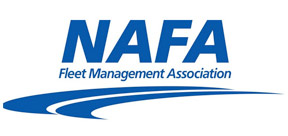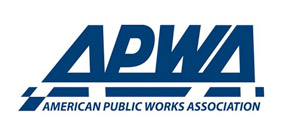San Pablo, Calif., moves toward a more vibrant city with sustainability practices

Recently the city of San Pablo, Calif., was recognized by the northern California chapter of the American Public Works Association for multiple sustainability projects with the Exceptional Performance in Sustainable Practices Award. These projects span a variety of efforts, including waste reduction, climate resilience, stormwater management and air quality improvements. One particular sustainability project, the Rumrill Boulevard Complete Streets project, also won the Small Cities Transportation Project of the Year and Project of the Year.
The Rumrill Boulevard Complete Streets project helps to reduce stormwater runoff, improve air quality and enhance safety for both pedestrians and cyclists. It boasts a 1.76-mile multimodal corridor with 32 bioswales, porous pavement, over 250 trees and full trash capture devices. It also included 3.4 miles of protected bike lanes, installation of new and improved pedestrian crossings and enhanced street lighting. The street design helped to reduce traffic speeds and improve multimodal access. Construction began in August 2021 and was completed in May 2024. In 2018 and 2019, the street had 145 collisions and 320 traffic citations. Since the safety improvements were installed in 2023 and 2024, there have been only 50 collisions and 45 traffic citations as well as no fatalities.
Improvement for Rumrill Boulevard included protected bike lanes, street design changes, improved lighting, stormwater management, accessibility improvements and aesthetic improvements. The bike lanes provide cyclists with a safer space to travel separately from vehicle traffic. Pedestrian safety was increased with widened sidewalks and curb extensions along with the installation of a rectangular rapid flashing beacon at crosswalks to increase visibility. Some crosswalk lengths were also reduced, for example, from 119 feet down to 32 feet or 88 feet down to 46 feet. In order to calm traffic speeds, travel lanes were narrowed with curb extensions to encourage slower travel speeds.

Updates were included to make streets more accessible for people with disabilities, such as ADA-compliant ramps and handrails. New street lighting helped to make it safer for pedestrians and cyclists and improved visibility at crosswalks. Green infrastructure included bioretention systems, which help to filter out pollutants and reduce stormwater flowing into creeks. These choices improved water quality, stormwater runoff and flooding. Aesthetic improvements included trees and native plants as well as the removal of older, hazardous trees.
One of the greatest challenges facing the Rumrill Boulevard project was coordinating with utility companies between construction and ongoing work.
“This required precise coordination, flexible scheduling and real-time problem-solving to avoid disruption,” Allan Panganiban, public works director and city engineer, mentioned.
The COVID pandemic also created difficulties with soaring construction material prices and supply chain delays. Conflicts were also discovered during construction with underground utilities, causing the team to revise designs and adapt construction methods.
“In one instance, stormwater infrastructure had to be relocated to avoid an unanticipated utility line — a solution that prevented delays and helped keep the project moving forward.” It was also a challenge to manage 10 funding sources with particular grant funding conditions and distribution of payment.
“The city has designated the southern portion of Rumrill Boulevard, the corridor between Brookside Drive and Costa Avenue, as a priority development area, a designation for areas that are near public transit and planned for new homes, jobs and community amenities,” Panganiban explained. “With a grant from the Metropolitan Transportation in conjunction with the Association of Bay Area Governments, the city of San Pablo has undertaken preparation of the Rumrill Corridor Plan to develop a shared vision for the corridor and to identify a variety of policy tools to guide its evolution. The corridor plan seeks to expand the range of housing choices available in the corridor and to improve environmental conditions and economic opportunities.”
Rumrill Boulevard is just one of many sustainability projects in the works. San Pablo is the first California city to have an all electric side-loading residential truck fleet, not including front-loading garbage trucks, which helps to reduce noise pollution and local emissions. The Butter Avenue Green Street project combined green efforts with flood mitigation. It helped to address a chronic flooding spot by treating runoff from over 23 acres with 8,500 feet of storm drain pipe and 5,500 square feet of bioretention with Silva cells. A $1.6 million Regional Alternative Compliance system — funded by the Environmental Protection Agency — helped the city find cost effective, large-scale stormwater treatment throughout Contra Costa County with a compliance credit system. An $8 million polychlorinated biphenyls total maximum daily load implementation project funded by grants led the city to identify and reduce PCB pollution regionally near San Francisco Bay.
Another sustainability project recognized was San Pablo’s citywide waste reduction programs. These include free dump days, neighborhood litter programs, special creek abatement cleanups and illegal dumping enforcement. Neighborhood Champions is a community-driven program empowering residents to become more active in ensuring the city’s cleanliness and beauty.
Three local residents were chosen as neighborhood champion liaisons for the outreach campaign San Pablo Shines. The campaign focused on reducing litter and illegal dumping, increasing awareness of the city’s free waste disposal programs and inspiring residents to have pride in maintaining a vibrant city and revitalizing the old town. Champions were paid $2,000 over 12 months as part of the Caltrans Clean California local government program. These champions have achieved impressive results: over 3,500 gallons of trash removed by more than 100 volunteers, illegal dumping reporting training using the Reach San Pablo app, four tons of trash removed during mini-dumpster days, school partnerships, and identification of two new camera locations to deter illegal dumping.
“While San Pablo does not yet have a formal, standalone sustainability plan, the public works department operates under a long-term, integrated environmental strategy aligned with the city’s climate action plan, stormwater permit mandates and localized health equity concerns,” Panganiban stated. “The city also uses tools like the long-term trash plan and direct discharge trash control plan to guide ongoing implementation and compliance with sustainability metrics.”

The storm drain master plan was completed in 2018 and identified some of the flood-prone areas, which led to the Sutter project finalized in 2025 and some of the Rumrill improvements completed in 2024. In 2023, the RAC system received approval and its first compliance credit sale was scheduled for 2025. The PCBs TMDL project and all-electric garbage contract were both launched and approved in 2024.
“By adding protected bike lanes, safer pedestrian crossings and better lighting, the project has made it easier and safer for people to get around,” Panganiban described. “It’s now more convenient to walk or bike, reducing dependence on cars and improving air quality in the process. The redesigned street also helps foster economic development by making the area more attractive to visitors and businesses. Additionally, the improved stormwater infrastructure will help reduce flooding, which has been a persistent issue in the area.”
The city continues to advance its sustainability efforts through grant funding, community designs and inter-agency collaboration. This includes plans to expand the regional alternative compliance system countywide with its stormwater treatment capacity and first compliance sale credit in 2025. San Pablo also plans to coordinate with over 100 Bay area agencies to help implement the PCB monitoring and reduction system. The city’s new solid waste contract will help to support further water diversion and illegal dumping programs for events like Dumpster Days, dump voucher program, community outreach and education, and illegal dumping support. City operations continue to move forward toward electric power with additional EV charging infrastructure, a transition plan for all city vehicles and the adoption of zero emission landscaping tools.
“The city’s approach is rooted in equity, resilience and community engagement,” Panganiban stressed. “By building infrastructure that addresses both climate adaptation and public health, San Pablo is not only responding to environmental burdens, it’s proactively building a more livable, sustainable future for all its residents.”
San Pablo plans to continue improving pedestrian and bicycle infrastructure and creating more green spaces. There are two large roadway improvement projects funded by grants that will provide additional multi-modal corridors throughout the city. A new 4.8-acre park project and a bridge replacement project are also in the works.
San Pablo Public Works Department is honored to have been recognized with these awards. “Winning these awards is an incredible honor for the city and truly validates the efforts put into the Rumrill Boulevard Complete Streets project,” Panganiban stated. “These recognitions reflect not just the technical expertise and hard work of the team but also the spirit of collaboration with the community, local businesses and partners throughout the project. It’s a testament to how innovation, sustainability and inclusivity can come together to transform public spaces for the better.”
These projects were possible with the support from city council, city management and residents.
“On a personal level, it’s absolutely exciting to see the city being recognized on both state and national levels. While the accolades are rewarding, the real pride comes from knowing that our residents, cyclists, pedestrians and everyone who uses Rumrill Boulevard now has a safer, more accessible and vibrant place to move through the community,” Panganiban said. “Additionally these recognitions help elevate San Pablo’s profile as a leader in thoughtful urban planning and transportation innovation. They show that our community’s vision is on the cutting edge and that can open up exciting doors for future funding and projects. I hope that San Pablo would be an example of what can be achieved with dedicated planning and community engagement, which we hope will inspire other cities to pursue similar goals and approaches.”
Next Article: Salem’s eye in the sky: How drones are transforming public works operations



